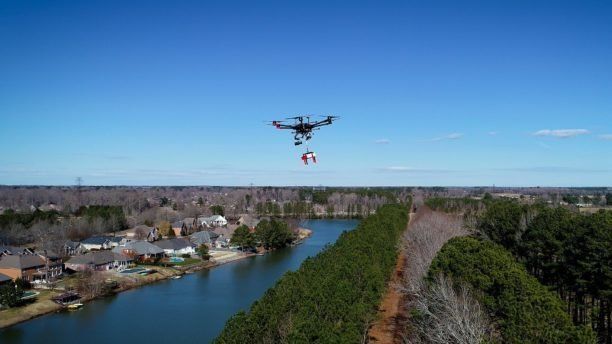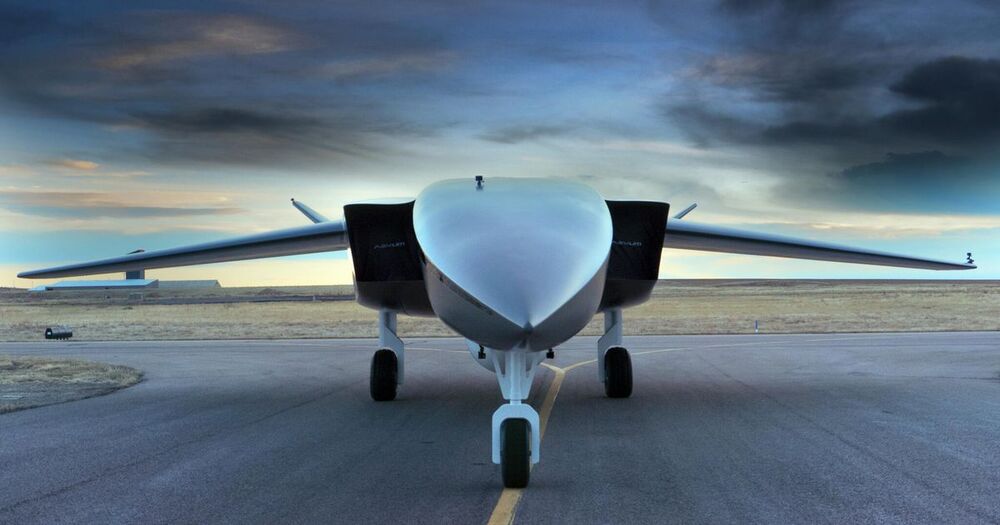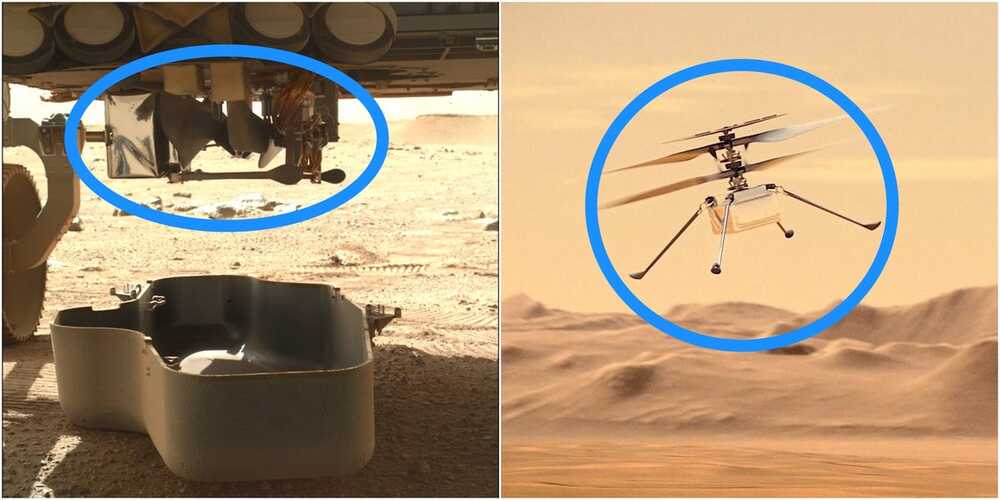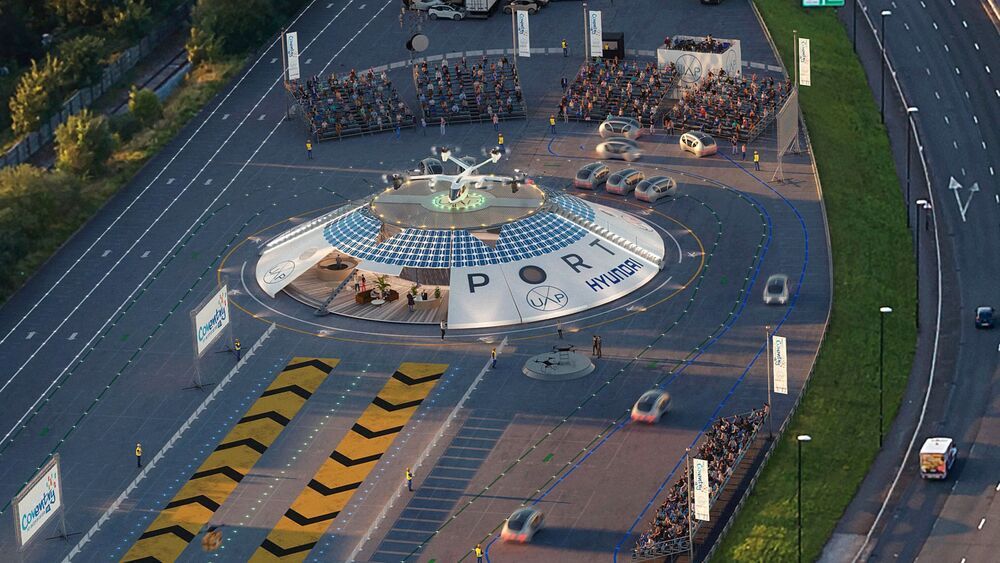We wrote about DroneUp’s drone delivery of Coke with Coffee to residents in Coffee, GA – but how exactly did that delivery work? The A2Z Rapid Delivery System allowed packages to be delivered without landing the drone – a method that solves a lot of problems in drone delivery.
CA-based A2Z Drone Delivery, LLC, has developed a patented tethered freefall drone delivery mechanism, the Rapid Delivery System (RDS1) used by DroneUp® for the project with Walmart and Coke. The RDS1 system lowers the delivery to the ground by tether – which means that homeowners don’t have to worry about a noisy landing or the potential for a landing drone to hit obstacles on its way down. “The RDS1 was chosen for its rapid delivery capabilities which reduced time-on-station to just 30 seconds per delivery, while minimizing intrusive rotor noise and limiting the window for risk to people on the ground,” says an A2Z press release.
“For our partners at DroneUp to put their trust in our system was the best proof of concept that we could imagine and was a memorable benchmark for our whole team,” said Aaron Zhang, founder of A2Z Drone Delivery, LLC. “The unique capabilities of the RDS1 were tailor-made for this type of residential delivery where our tethered freefall mechanism can accurately and quickly deposit payloads while hovering far from people, homes, trees and utility wires.”







